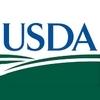Explore all the information on
Poultry gut health
The efficient conversion of feed into its basic components for optimal nutrient absorption is vital for both broiler and broiler breeder production and welfare. Gut health, an intricate and complex area combining nutrition, microbiology, immunology and physiology, has a key role to play. When gut health is compromised, digestion and nutrient absorption are affected which, in turn, can have a detrimental effect on feed conversion leading to economic loss and a greater susceptibility to disease. In addition, recent changes in legislation on the use of antimicrobials, differing feed requirements and more efficient birds highlight the need for a better understanding of gut function and gut health.
'We have been able to save up to €800 per building with Alterion®, which is quite an achievement.' Adelaïde Bretaudeau – Broiler Farmer. A recent field trial was performed on three farms that belong to Groupe Michel, a French poultry production organization. The test was repeated over 4 consecutive cycles, on nearly 700,000 broilers, and showed that Alterion® performed consistently under commercial conditions, improving the gut health, technical and economic performance, and welfare of...
Comments : 1
Recommendations: 3
Mike Kogut (USDA-ARS) talked about nutrition, intestinal immunity, microbiome and dysbiosis, among other subjects, during the Latin American Poultry Congress in Lima, Peru....
Comments : 4
Recommendations: 10
The identification of mild to moderate gizzard erosions (GE) in more than 20- 30% of the healthy commercial broilers examined in post mortem sessions, is commonly found in several countries in the Americas and Asia. The gizzard, also called...
Comments : 7
Recommendations: 15
...
Comments : 0
Recommendations: 3


Innovative Directions in Aflatoxin Testing Point to Measureable Gains in Quality Of Lab Data
Suggested link
The gastro-intestinal tract (GIT) of poultry has a complex and dynamic microbial community consisting primarily of bacteria whose cell wall contains the structural polymer peptidoglycans (PGNs). Bacterial cell wall recycling is a process whereby bacteria degrade their own wall during growth in order to recover released constituents by active transport. These nutrients are then reutilized to either rebuild the wall or to gain energy (Mayer, 2012). However, in both normal and a challenged GI...
Comments : 2
Recommendations: 2
The villi of the intestinal mucosa are lined by a single layer of columnar cells, comprising enterocytes, goblet and enteroendocrine cells, and various types of immune cells, each with a distinct function. Chicken gut mucosa is exposed to an enormous number of feed antigens, and pathogenic bacteria that often impair the intestinal barrier function. Ultrastructural examination of enterocytes, their organelles and other features, such as mitochondria, microvilli, and tight junctions sealing...
Comments : 1
Recommendations: 0
INTRODUCTION Antimicrobial resistance is a major threat to human health (1). Host-directed therapy has emerged as a promising antibiotic-free strategy for disease control and prevention (2, 3). Host defense peptides (HDPs), also known as antimicrobial peptides, are small molecules of the innate immune system featuring antimicrobial and immunomodulatory properties (4, 5). Inducing HDP synthesis is a host-directed antimicrobial therapy that is being actively explored for human and...
Comments : 0
Recommendations: 0
Starch is the most abundant source of energy in broiler diets, providing about 50 % of apparent metabolisable energy. Broiler diets generally contain approximately 40 % starch, which is thought to be completely digested within the small intestine. However, the microbiota in the large intestine also plays an important role in starch digestion, producing volatile fatty acids that act as an energy source. The potential consequence of this is an incorrect prediction of the digestible energy...
Comments : 0
Recommendations: 1
I. INTRODUCTION Throughout the world, poultry are a major and growing source of high-quality protein, as they outperform all other terrestrial meat production systems in water, feed, carbon, and land use efficiency. A challenge for intensive production systems has been the potential to introduce high pathogen loads and stresses on the animals. Such challenges have traditionally been managed with the assistance of antibacterial growth promoters. However, the poultry...
Comments : 0
Recommendations: 0
Introduction Modern layer hybrids are a four-line-cross with a long breeding history and show a very high production potential in different housing systems all around the world. This proofs for white egg producing lines and for brown egg producing hens as well. Due to ongoing genetic work the egg industry and farmers realise steadily increasing persistency and longer liability under all housing conditions. The higher performance has been achieved by an increased efficiency too,...
Comments : 2
Recommendations: 6
AMES, Iowa — Researchers in the Department of Food Science and Human Nutrition at Iowa State University have discovered an innovative approach to fight bacteria and their antimicrobial resistance in poultry by exploiting linkages between the gut neurochemical and immune systems.
Poultry products are the primary vehicle for exposure to the foodborne disease, Salmonella, in the United States. More than 1 million infections represent approximately $400 million in costs each year....
Comments : 1
Recommendations: 2
Dietary protease supplementation has been observed to improve broiler growth performance and amino acid digestibility (Angel et al., 2011; Fru-Nji et al., 2011). Improvements in broiler energy utilisation have also been observed with supplemental protease (Sorbara, 2009; Freitas et al., 2011). These positive extra-proteinaceous effects may be influenced by age and diet type. In addition, these effects may vary throughout the broiler small intestine. Therefore, an experiment was conducted to...
Comments : 0
Recommendations: 0


Lost in the Market Uncertainty Caused by the Outbreak
Suggested link
Background Maintaining and improving gut health is fundamentally important as the gut supports optimal digestion and therefore performance and profitability of production. Managing gut health through barrier function is regarded as a new frontier for disease prevention across different species [1]. In poultry, considerable research has been done on improving animal performance and gut health through various nutritional approaches. However, few objective measures have been...
Comments : 0
Recommendations: 0
Introduction The gastrointestinal (GI) tract of humans and animals is populated with a diverse group of microbes known as the microbiota that include bacteria, fungi, archaea, protists, and viruses, with bacteria being the most predominant [1, 2]. The bacterial microbiota is well known to be critically involved in host physiology and immune development [1, 2]; however, the role of the fungal community, known as the mycobiota, that plays in health and diseases is less studied and...
Comments : 0
Recommendations: 0


Enhancing Egg Production: Key Factors Influencing Chicken Health and Yield
Suggested link
INTRODUCTION Necrotic enteritis (NE), caused by Clostridium perfringens, is one of the most economically significant enteric diseases in poultry, resulting in an annual loss of approximately $6 billion to the global poultry industry (Wade and Keyburn, 2015). NE is manifested by lesions throughout the small intestine and associated with growth retardation, reduced feed efficiency, and up to 50% mortality (Shojadoost et al., 2012; Wade and Keyburn, 2015). NE is a...
Comments : 0
Recommendations: 0
Hankkija’s yeast hydrolysate Progut® is a natural solution for antibiotic free production systems. Yeast activated by our unique hydrolysis does excellent job in pathogen binding, modulating immunity, and improving feed efficiency. The efficacy of both products belonging to the Progut® family has been proven both scientifically and in field. ...
Comments : 0
Recommendations: 3
The dietary fibre content of poultry diets is frequently neglected during feed formulation, despite the prevalence of fibrous material in feed ingredients and notable impacts of fibre on the gastrointestinal tract environment. The extent of the influence of dietary fibre is dictated by the specific fibre fraction, i.e. primarily its solubility in gastrointestinal environmental conditions, as well as by the age and health status of the bird. Measuring soluble and insoluble non-starch...
Comments : 0
Recommendations: 0
I. INTRODUCTION Antibiotic growth promoters have been successfully utilized in the past to control gut dysbiosis (Dibner and Richards, 2005). However, poultry production is changing because of consumer and governmental pressure to reduce the use of antibiotics (Cervantes, 2015). Little or no attention is given by nutritionists to understanding the fibre composition in poultry diets and their role in gut health...
Comments : 0
Recommendations: 0
Fats and oils are widely used in poultry diets as a source of energy and to increase palatability. Increasing dietary fat level has been reported to improve the apparent ileal digestibility of amino acids (Cowieson and Ravindran, 2008). These improvements may be related, in part, to reduced endogenous amino acid (EAA) losses, but the influence of dietary fat on EAA losses has not been studied in chickens. The present study was carried out to measure the basal EAA losses in male broilers...
Comments : 0
Recommendations: 1
...
Comments : 0
Recommendations: 0



.jpg&w=3840&q=75)







.jpg&w=3840&q=75)















